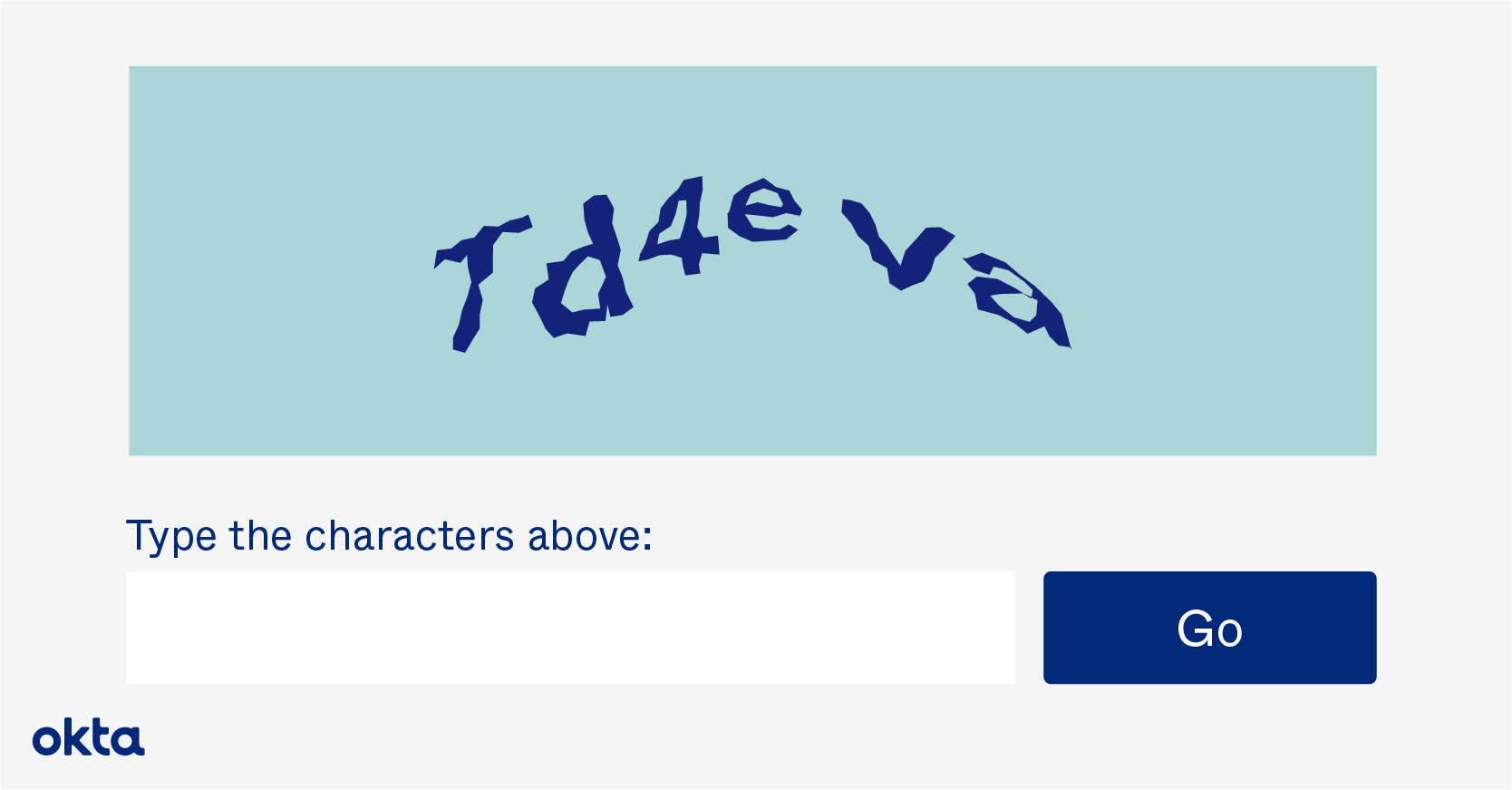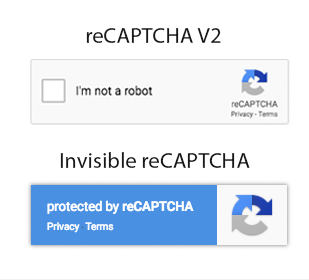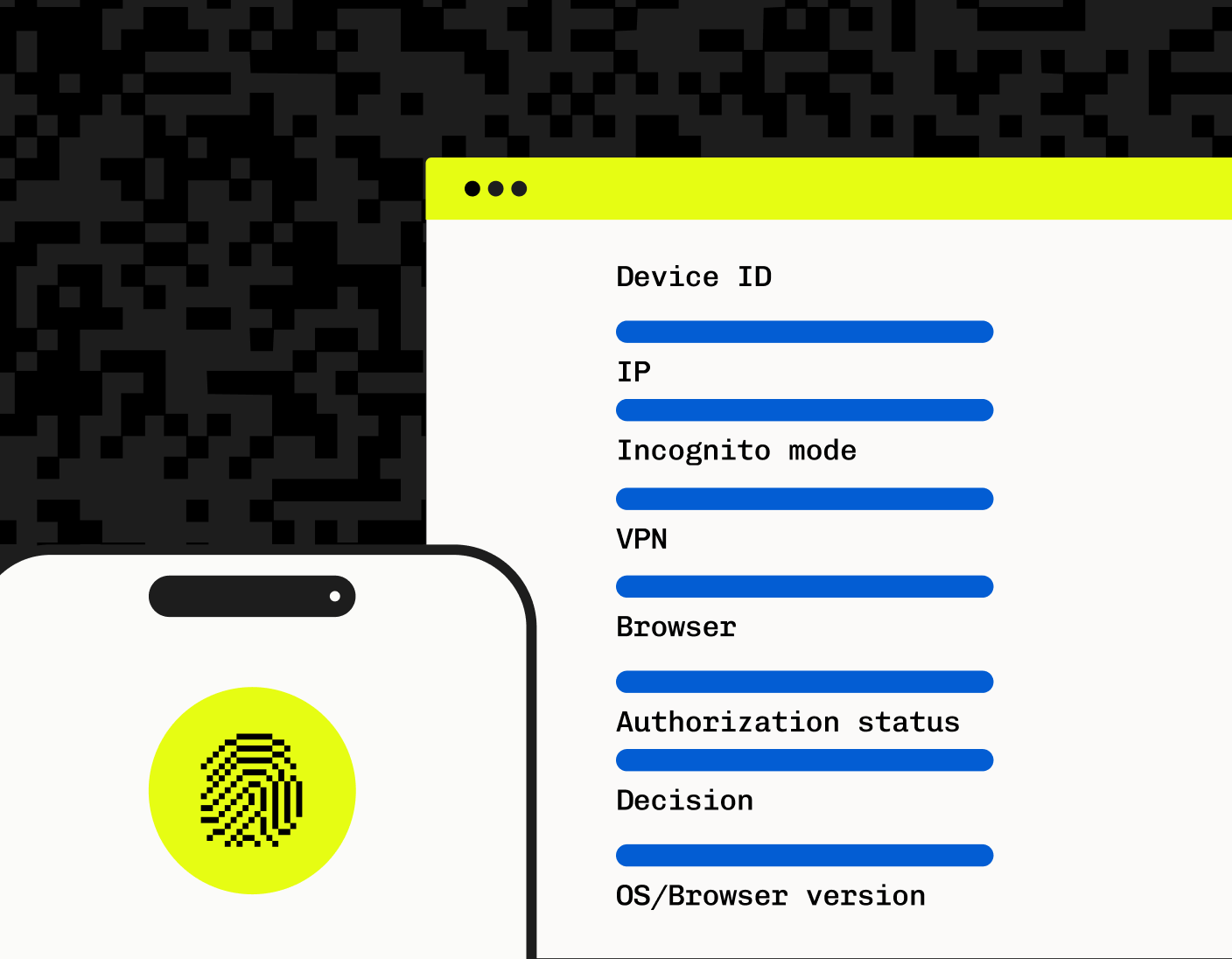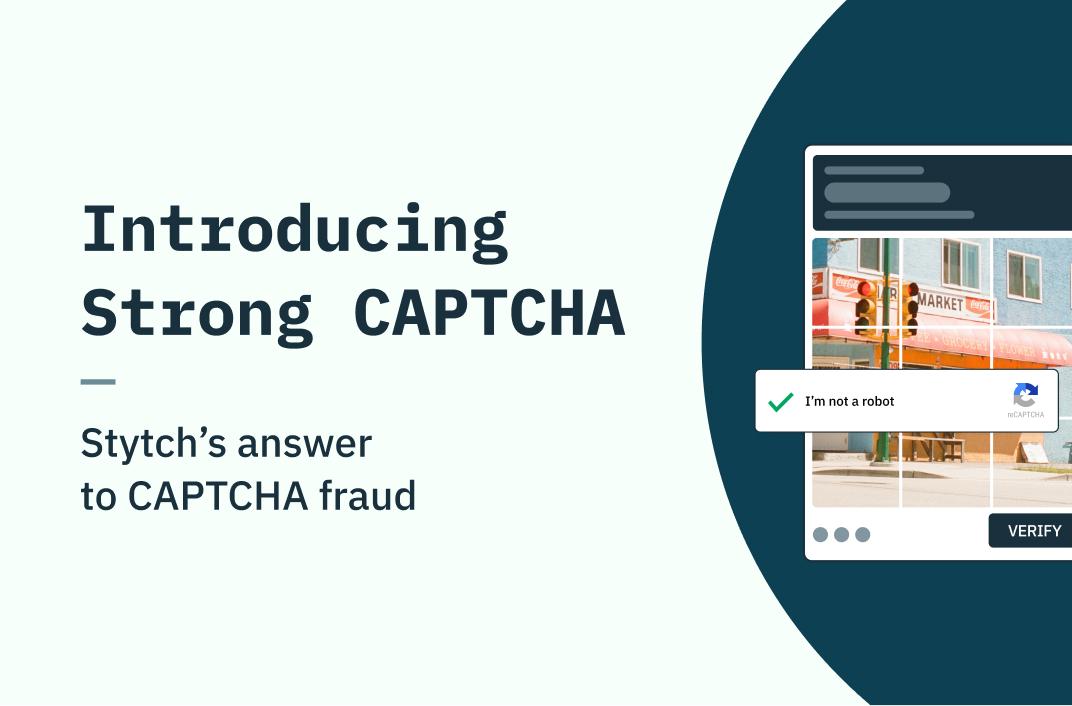Back to blog
CAPTCHA vs. reCAPTCHA: What’s the difference?
Auth & identity
Jun 11, 2024
Author: Alex Lawrence

As virtual worlds continue to expand, online interactions are increasingly replacing their in-person counterparts. As such, safeguarding websites and apps against fraudsters seeking to impersonate our digital identities is more crucial than ever.
CAPTCHA and reCAPTCHA are popular authentication technologies for such protection against automated spam and malicious bots – two of the most pernicious forms of digital fraud. These internet identity defense mechanisms can distinguish between human users and malicious bots to halt the growing threat of identity theft and account takeovers.
This article delves into the nuances of CAPTCHA and reCAPTCHA, explaining their shared functionality as well as their distinctions, shortcomings and evolution to combat sophisticated threats in the AI era.
From CAPTCHA to reCAPTCHA: History and evolution
CAPTCHA stands for “Completely Automated Public Turing test to tell Computers and Humans Apart.” At its core, it’s a system designed to prove that a user of a web service is human and not a bot. CAPTCHAs challenge users to complete tests that are usually simple for humans but complicated for automated bots, effectively blocking many types of bot attacks.
A step beyond CAPTCHA, reCAPTCHA is an enhanced iteration of traditional CAPTCHA technology that improves accuracy and the user experience while maintaining robust bot protection. Originally created by researchers at Carnegie Mellon University and later acquired by Google, reCAPTCHA is a ‘smarter’ and more user-friendly form of its predecessor that leverages advanced risk analysis techniques to present challenges that adapt based on user interaction with a web page or app.
There are various CAPTCHA services available, such as hCAPTCHA, Cloudflare Turnstile, and Friendly Captcha, each offering different approaches to user interaction and privacy. For the purposes of this article, we’ll focus specifically on the differences between CAPTCHA and reCAPTCHA.
How CAPTCHA Works
The central idea of CAPTCHA involves presenting a cognitive or sensory CAPTCHA challenge that humans can pass with little effort but poses a significant hurdle for bots. Visual challenges, like identifying specific objects in images and manual image recognition tasks, are commonly used to distinguish between human and bot traffic. The idea is simple – if a bot can’t read or interpret distorted text, it will not be able to pass the test.
These challenges often include:
Visual puzzles (e.g. recognizing distorted text)

Identifying objects in images

Solving simple math problems

For example, users may be asked to identify a sequence of letters and numbers from an image that is intentionally distorted with noise and lines. Humans can easily recognize the characters despite the distortion, whereas many bots were not historically programmed to be able to do this.
Beyond text and image recognition challenges, CAPTCHAs have expanded to include a variety of challenges like audio CAPTCHAs, which are crucial for accessibility, allowing users with visual impairments to authenticate themselves via sound tests. Additionally, unlike reCAPTCHA, CAPTCHA can include puzzles that require users to match objects or identify patterns in images.
CAPTCHA’s fallibility and the birth of reCAPTCHA
The original CAPTCHA was created in the year 2000. Its evolution to the more advanced and user-friendly Google reCAPTCHA, starting in 2007, is a story of the natural growth in complexity of the internet.
The reCAPTCHA system was developed as an attempt to improve traditional CAPTCHAs in the face of more sophisticated threats. While CAPTCHAs have proven effective at blocking bots from filling out forms and spamming websites, they can still be bypassed by more advanced bots. For example, attackers have been able to use machine learning algorithms to train their bots to solve common types of CAPTCHAs, leading to an environment where each side must continually outsmart the other.
As expected, this constant arms race between the new methods of attackers and new forms of CAPTCHA technologies have led to more complex challenges, resulting in frustration and friction for users. This pain point is especially significant for users with disabilities or those using assistive technologies, for whom extensive and complex CAPTCHAs have made it difficult to easily access and use websites.
A bot blocker with better UX
First introduced in 2007, Google’s reCAPTCHA was a true game-changer. It not only enhanced the bot detection algorithms but also significantly improved user experience by reducing the complexity of challenges for most users. In fact, in 2012, Google’s reCAPTCHA was updated to entirely eliminate the need for users to type text, deploying a simple “I’m not a robot” checkbox (thanks, Googlers!).

As far as bot detection, the new reCAPTCHA system was far more intuitive, analyzing user interactions and other data with machine learning algorithms to determine whether a human or bot was attempting to access the webpage. In step-up authentication fashion, additional challenges such as image recognition tasks were presented when necessary if suspicious or bot-like behavior was present.
reCAPTCHA’s advanced algorithms are designed to combat sophisticated bots that can bypass traditional CAPTCHA challenges during bot attacks. It was designed to provide an unobtrusive user experience for most genuine users and only escalate to more challenging tasks when necessary.
As a result, reCAPTCHA was able to achieve an improved bot detection rate of 99.9% while maintaining an impressive user approval rate of over 97%, according to Google.
Aside: Stytch Strong CAPTCHA improves upon reCAPTCHA technology by taking anti-fraud technology even further. It removes the public site key entirely from the end user’s browser environment making it architecturally impossible for CAPTCHA farms to solve, providing robust protection against automated bots and third-party solving services. Learn more, here.
Invisible reCAPTCHA
While the “I’m not a robot” checkbox may have been a significant improvement in terms of user experience, it still required some level of user attention and interaction. In response in 2017 (in typical Google fashion), the company removed this arguably minimal user friction altogether with an update called “Invisible reCAPTCHA”. This enhancement eliminated the need for any user interaction at all, providing a completely frictionless experience for human users while still effectively detecting bots.
Since then, there have been even further advancements in CAPTCHA technology, including biometric-based challenges such as voice and face recognition, making the process even more seamless for human users. Undeniably, this shift towards invisible and biometric-based CAPTCHA systems highlights the importance of user experience in modern CAPTCHA solutions.
CAPTCHA vs. reCAPTCHA: Breakdown of notable differences
CAPTCHA | reCAPTCHA | |
|---|---|---|
User Challenges | ||
User Challenges | Typically involves text-based puzzles, distorted images, or audio challenges that users must decode. | Includes image recognition tasks, checkbox ("I am not a robot"), and invisible CAPTCHAs that analyze user behavior without direct interaction. |
UX | ||
UX | Can be frustrating due to difficult puzzles that sometimes even humans struggle to solve. Also presents accessibility issues. | Can be more user-friendly, requiring only minimal interaction such as clicking a checkbox - or no interaction at all (invisible reCAPTCHA). |
Bot Detection | ||
Bot Detection | Effective against basic bots using simple scripted actions. | Highly effective against sophisticated bots, with continuous updates to address new threats. |
Machine learning | adaptability | ||
Machine learning | adaptability | Limited adaptability to new threats; often requires updates for new challenge types. | Continuously evolving with updates to its machine learning models to counter new bot strategies more effectively. |
Data Privacy | ||
Data Privacy | Collects minimal data, primarily focused on the immediate interaction. | May collect extensive data related to user interactions to analyze behavior, raising potential privacy concerns. |
reCAPTCHA privacy concerns and future outlook
The evolution from CAPTCHA to reCAPTCHA hasn’t been without certain drawbacks. While reCAPTCHA is effective in enhancing security and UX, it has raised concerns regarding privacy due to the amount of data it can collect. This includes IP addresses, cookies, and site interaction specifics, which, while used primarily for security purposes, can lead to privacy issues – particularly under stringent regulations like the GDPR in the EU.
The various CAPTCHA services handle privacy and data collection in different ways, with some like hCAPTCHA and Friendly Captcha emphasizing privacy compliance and minimal data collection. Google reCAPTCHA on the other hand sits at the higher end of data collection and aggregation to provide an optimal experience. Google has made efforts to minimize the amount of data collected through reCAPTCHA, including implementing a new version called “reCAPTCHA Enterprise” that does not collect any personal data. Nevertheless, it’s still important for website owners to carefully consider and disclose the use of reCAPTCHA on their sites to ensure compliance with privacy regulations.
reCAPTCHA at an inflection point?
Google has had to continually reinvent reCAPTCHA to stay apace. As mentioned, Google’s original reCAPTCHA, released in 2007, used distorted text images as challenges to differentiate between humans and bots. In 2014, reCAPTCHA v2 introduced the “I am not a robot” checkbox, followed by image recognition tasks if further verification is needed. V2 became widely used due to its simplicity and effectiveness in distinguishing between human users and bots based on their interactions with the checkbox and subsequent challenges. Nevertheless, there were still concerns regarding user privacy and a cumbersome experience, as well as the amount of data being collected.
Overall, the evolution of reCAPTCHA shows an ongoing effort by Google to provide effective bot protection while also considering user experience and privacy concerns. As technology continues to advance, it is likely that reCAPTCHA will continue to evolve in order to stay ahead of the ever-evolving tactics used by bots.
With invisible reCAPTCHA and beyond, as well as impending advancements in machine learning and artificial intelligence, it is possible that future versions of reCAPTCHA shipped by Google will be even more efficient – and, fortunately, Googlers aren’t the only ones leading the charge.
Stytch Strong CAPTCHA
Google’s reCAPTCHA has undoubtedly set the bar high for what’s possible with CAPTCHA in reducing and preventing malicious traffic on the web. But what’s become clear in an increasingly mobile, multi-device world is that fraudsters will stop at nothing to find the latest loophole.
Stytch Strong CAPTCHA takes the security measures of modern reCAPTCHA further by making it architecturally impossible for CAPTCHA farms to solve or directly generate solutions using attacker preferred, easy-to-use API pathways. Strong CAPTCHA is functionally incompatible with how most image captcha solver services work today because we have removed the public site key entirely from the end user’s browser environment. Without direct public-key access, malicious bots can no longer use these services to easily get through CAPTCHA challenges, strengthening the line of defense between a given site and bad actors.
Stytch Device Fingerprinting
Stytch Device Fingerprinting (DFP) adds an innovative layer of security to Strong CAPTCHA by analyzing unique device characteristics during login or any sensitive web action. By detecting anomalies in device behavior that deviate from typical user patterns, Stytch DFP can identify potential bot activity. When suspicious indicators are detected, Stytch DFP can selectively trigger CAPTCHA, reCAPTCHA, or Strong CAPTCHA challenges, thereby adding an additional measure of security. This selective triggering not only enhances security by preventing automated access but also improves the user experience by not burdening legitimate users with unnecessary challenges.
Stytch DFP ensures that security measures are adaptive and specifically targeted, making the defenses more dynamic and efficient. This approach helps maintain the balance between robust security and user convenience, effectively safeguarding against bots without disrupting the user experience.
To learn more about how Stytch Strong CAPTCHA, DFP or other authentication solutions can work for you, reach out to an auth expert to start a conversation.
Prevent fraud with Stytch
Pricing that scales with you • No feature gating • All of the auth solutions you need plus fraud & risk
Authentication & Authorization
Fraud & Risk Prevention
© 2025 Stytch. All rights reserved.


